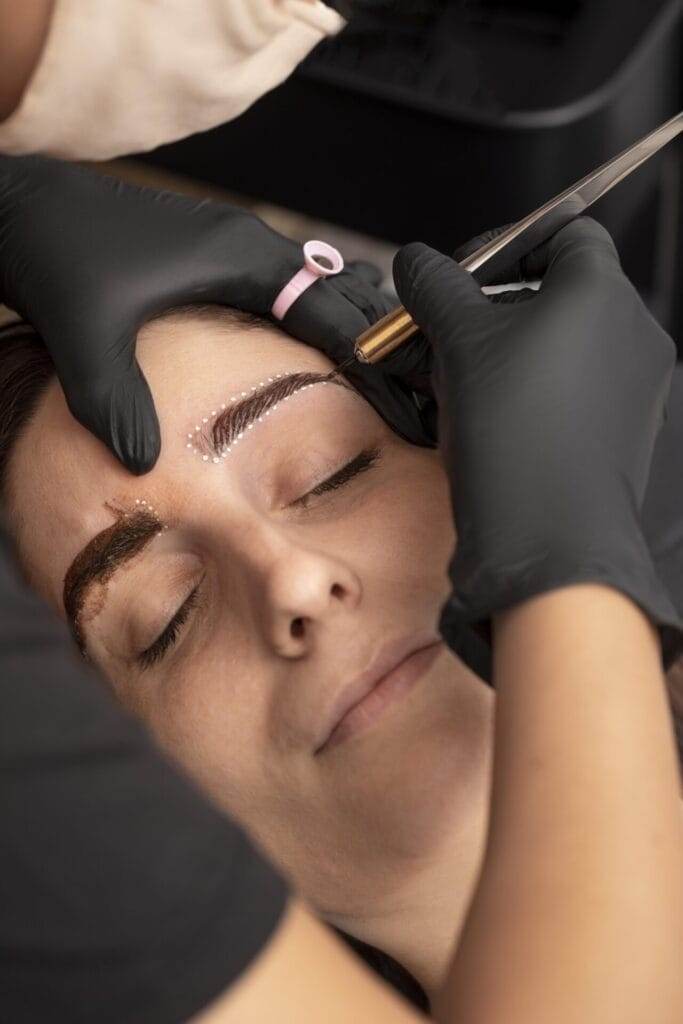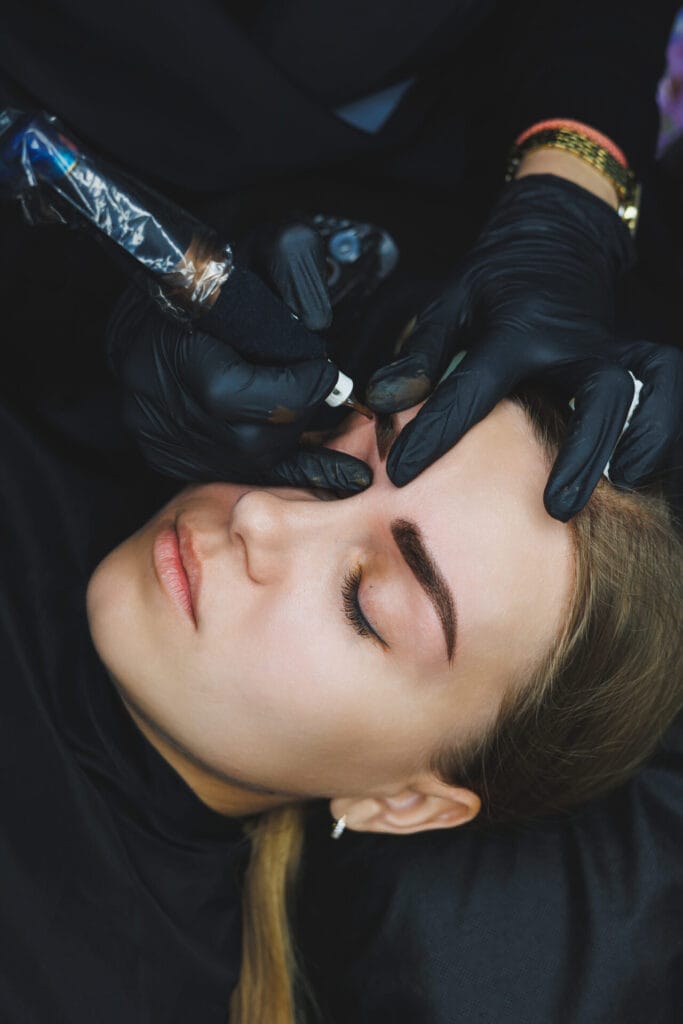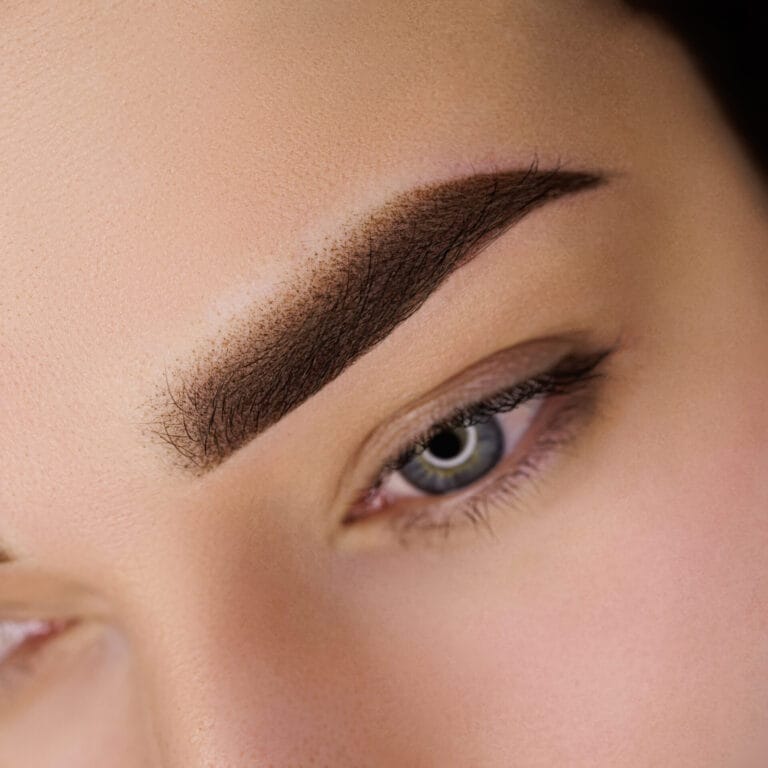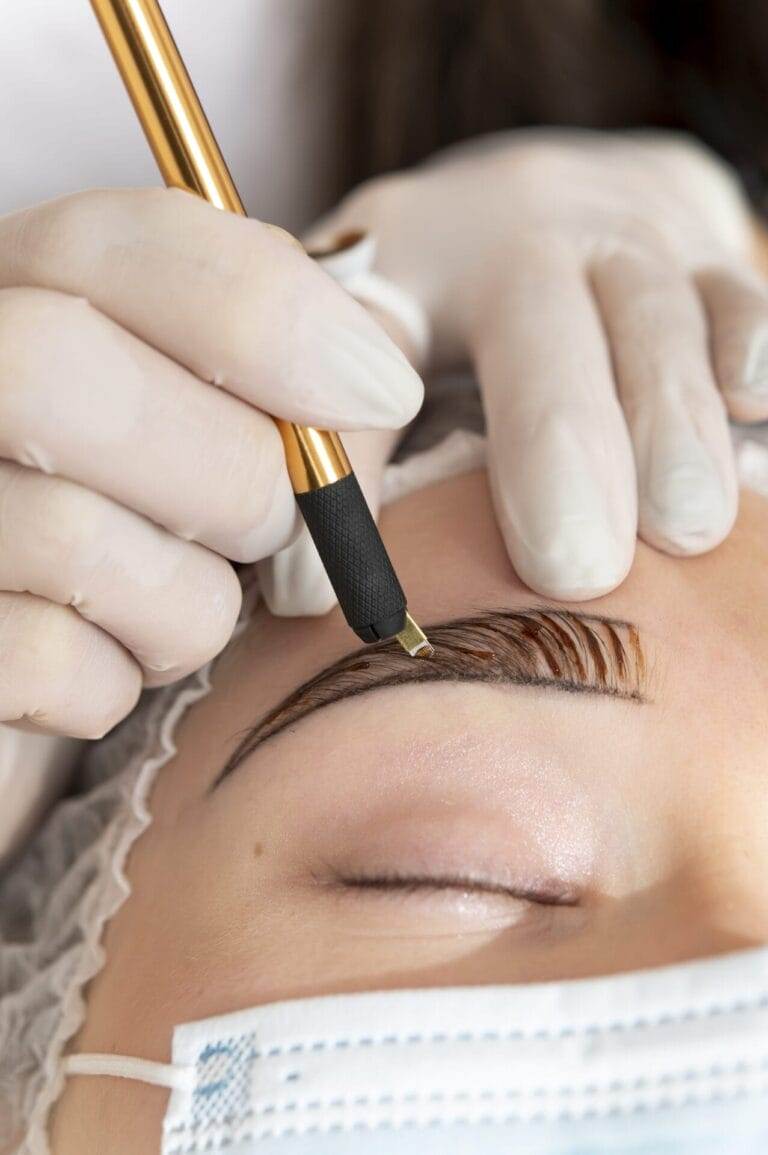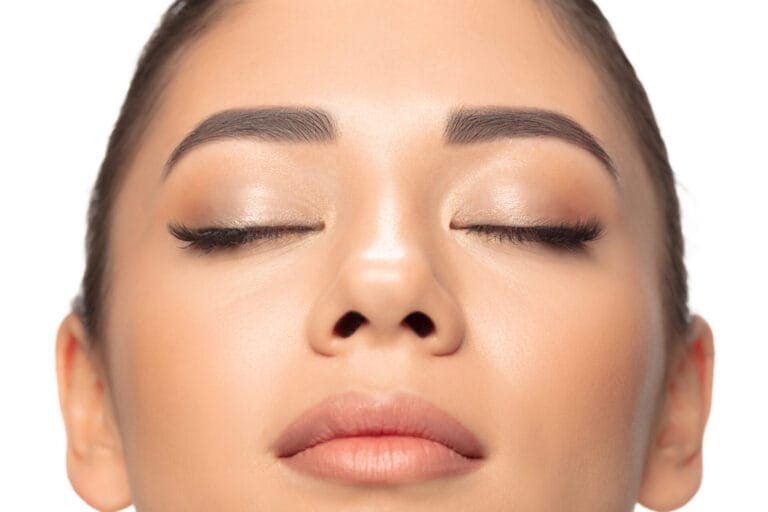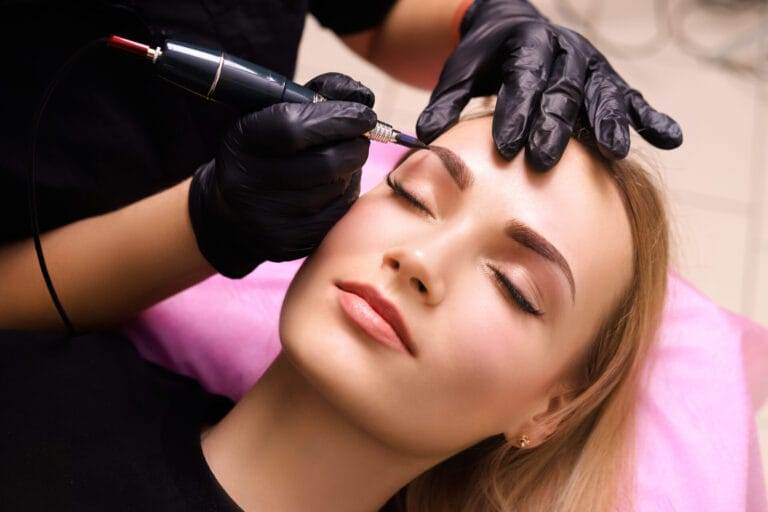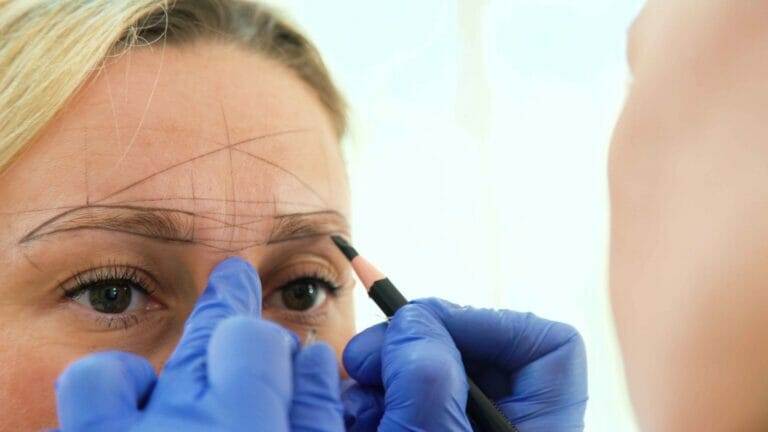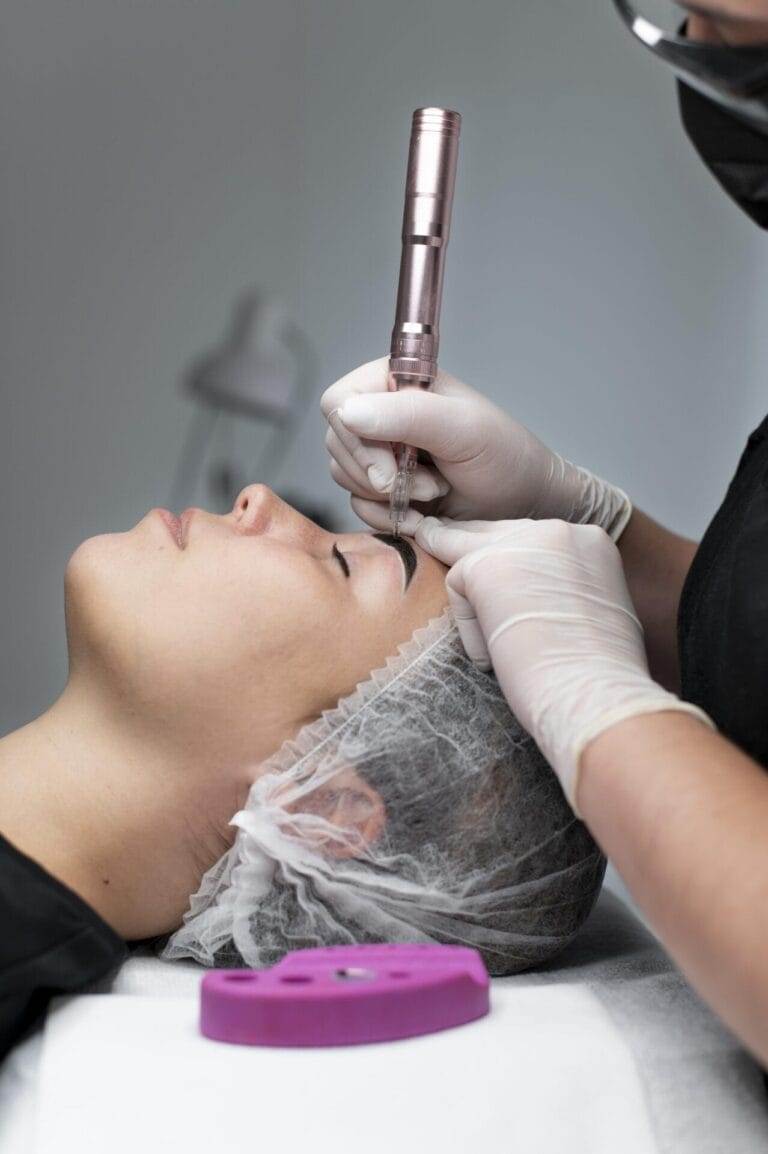Microblading has become increasingly popular in recent years as a way to achieve perfectly shaped and defined eyebrows. This semi-permanent makeup technique involves using a handheld tool to create hair-like strokes on the skin, giving the appearance of natural-looking eyebrows. The popularity of microblading can be attributed to its ability to enhance and transform the face, saving time and effort in daily makeup routines.
What is microblading and why is it popular?
Microblading is a form of cosmetic tattooing that uses a manual handheld tool with tiny needles to deposit pigment into the skin. The process involves creating individual hair-like strokes that mimic the natural growth pattern of eyebrows. This technique allows for precise and realistic results, giving the appearance of fuller and more defined brows.
The popularity of microblading can be attributed to several factors. Firstly, it offers a long-lasting solution for those who struggle with sparse or uneven eyebrows. Unlike traditional eyebrow makeup, which needs to be applied daily and can smudge or fade throughout the day, microblading provides semi-permanent results that can last up to two years.
Additionally, microblading allows for customization and personalization. The shape, color, and thickness of the brows can be tailored to suit each individual’s unique features and preferences. This level of customization ensures that the end result looks natural and enhances the overall facial appearance.
Preparing for your microblading appointment: what to expect
Before your microblading appointment, you will receive pre-appointment instructions from your chosen artist. These instructions may include avoiding certain medications or supplements that can thin the blood, such as aspirin or ibuprofen, as well as avoiding alcohol and caffeine for a few days prior to the procedure.
On the day of your appointment, it is important to arrive with clean skin. Avoid applying any makeup or skincare products to the eyebrow area. This will ensure that the artist has a clean canvas to work with and can achieve the best results.
When attending your appointment, be sure to bring any reference photos or examples of the desired eyebrow shape and style. This will help the artist understand your preferences and expectations. It is also important to communicate any concerns or questions you may have during this time.
The microblading process: step-by-step guide
The microblading process typically involves several steps to achieve the desired results. Firstly, the artist will consult with you to determine the ideal shape and style for your eyebrows. They will then use a handheld tool with tiny needles to create hair-like strokes in the skin, depositing pigment into each stroke.
The process requires precision and attention to detail, as each stroke must be carefully placed to mimic the natural growth pattern of eyebrows. The artist will work with you throughout the process, ensuring that you are comfortable and satisfied with the shape and color of your new brows.
After the initial microblading session, a follow-up appointment is usually scheduled to touch up any areas that may have faded or need additional pigment. This touch-up session is important for achieving optimal results and ensuring that the brows look natural and symmetrical.
Pain management during microblading: what to know
Pain management during microblading is an important consideration for many individuals. While the process involves creating small incisions in the skin, most people report minimal discomfort during the procedure. However, pain tolerance can vary from person to person.
To manage any potential discomfort, microblading artists may use topical numbing creams or gels to numb the area before starting the procedure. These numbing agents help to minimize any pain or discomfort during the process. It is important to communicate with your artist about your pain tolerance and any concerns you may have.
It is worth noting that some individuals may experience slight redness or swelling in the treated area following the procedure. This is a normal part of the healing process and typically subsides within a few days.
Aftercare tips for optimal healing and results
Aftercare is a crucial part of the microblading process and plays a significant role in achieving optimal healing and results. Following your appointment, your artist will provide you with specific aftercare instructions that should be followed closely.
These instructions typically include avoiding getting the eyebrows wet for a few days, avoiding excessive sweating or exercise, and avoiding direct sunlight or tanning beds. It is also important to avoid picking or scratching at the treated area, as this can interfere with the healing process and result in pigment loss.
Additionally, it is important to keep the treated area clean and moisturized during the healing process. Your artist may recommend using a specialized aftercare ointment or cream to keep the skin hydrated and promote healing.
Following these aftercare instructions is crucial for achieving optimal healing and long-lasting results. Failure to follow these instructions can result in pigment loss or uneven healing.
Common microblading mistakes to avoid
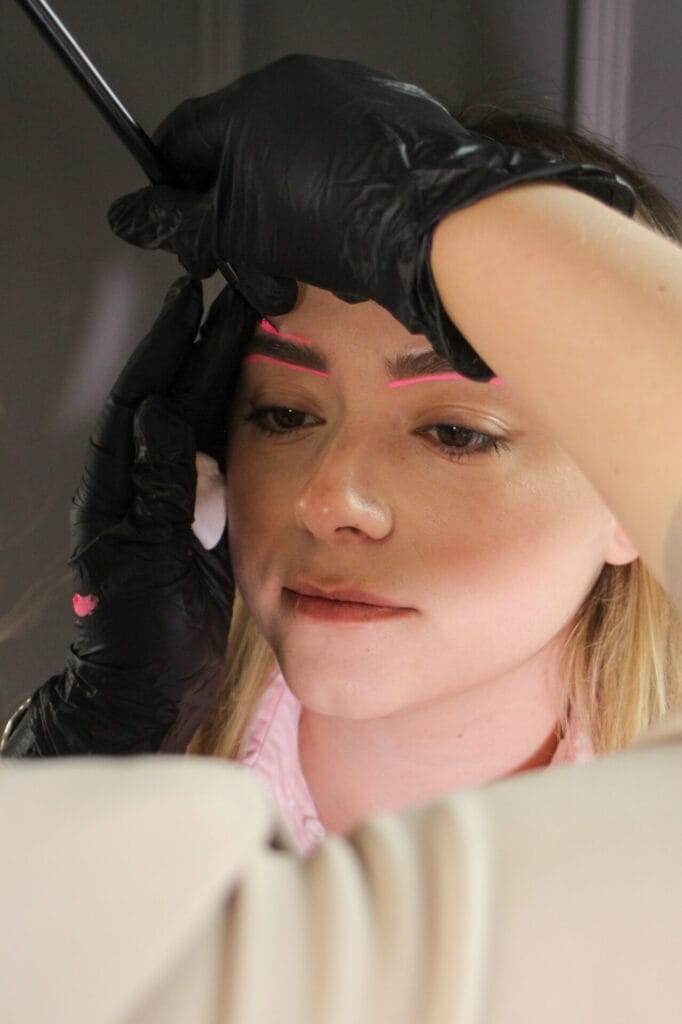
While microblading is a highly skilled technique, there are some common mistakes that can occur during the process. These mistakes can result in unsatisfactory results or even damage to the skin.
One common mistake is creating brows that are too thick or too dark for the individual’s natural features. It is important for the artist to consider the client’s facial structure, skin tone, and hair color when determining the ideal shape and color for the brows. Overly thick or dark brows can appear unnatural and overpowering.
Another common mistake is improper placement of the hair-like strokes. Each stroke should be carefully placed to mimic the natural growth pattern of eyebrows. If the strokes are placed too close together or in an unnatural pattern, the end result can look artificial and unflattering.
To avoid these mistakes, it is crucial to choose a skilled and experienced microblading artist who understands the importance of precision and attention to detail. Researching potential artists and reviewing their portfolio can help ensure that you find an artist who can deliver the desired results.
Touch-up sessions: when and why they’re necessary
Touch-up sessions are an important part of the microblading process and are typically scheduled a few weeks after the initial appointment. These sessions allow the artist to assess how the brows have healed and make any necessary adjustments or additions.
During the healing process, some areas of the brows may fade or lose pigment. The touch-up session allows the artist to fill in these areas and ensure that the brows look symmetrical and natural. It also provides an opportunity to make any desired changes to the shape or color of the brows.
It is important to attend your scheduled touch-up session, as it plays a crucial role in achieving long-lasting results. Failure to attend this session may result in uneven healing or premature fading of the pigment.
How to maintain your microbladed brows for longevity
To maintain the longevity of your microbladed brows, it is important to follow proper maintenance and care routines. Avoid excessive exposure to sunlight or tanning beds, as this can cause the pigment to fade more quickly. It is also important to avoid using harsh skincare products or exfoliants on the treated area, as these can also cause premature fading.
Using a gentle cleanser and moisturizer on the brows can help keep the skin hydrated and promote optimal healing. It is also important to avoid picking or scratching at the treated area, as this can interfere with the healing process and result in pigment loss.
Additionally, it is recommended to avoid using any makeup or skincare products directly on the brows. This can cause the pigment to fade more quickly and may interfere with the healing process.
Microblading for different skin types and hair colors
Microblading can be customized for different skin types and hair colors to achieve optimal results. The color of the pigment used can be adjusted to match the individual’s natural hair color, ensuring that the brows look natural and seamless.
For individuals with fair or light-colored hair, a lighter shade of pigment may be used to create a more subtle and natural look. On the other hand, individuals with darker hair may opt for a slightly darker shade of pigment to achieve more defined and dramatic brows.
The technique can also be adapted for different skin types. For individuals with oily skin, the artist may use a slightly different technique or type of pigment to ensure that the color lasts longer and does not fade prematurely. Similarly, individuals with dry or sensitive skin may require additional care and moisturization during the healing process.
Customization is key in achieving optimal results with microblading. It is important to communicate your preferences and concerns with your chosen artist to ensure that they can tailor the procedure to suit your unique features.
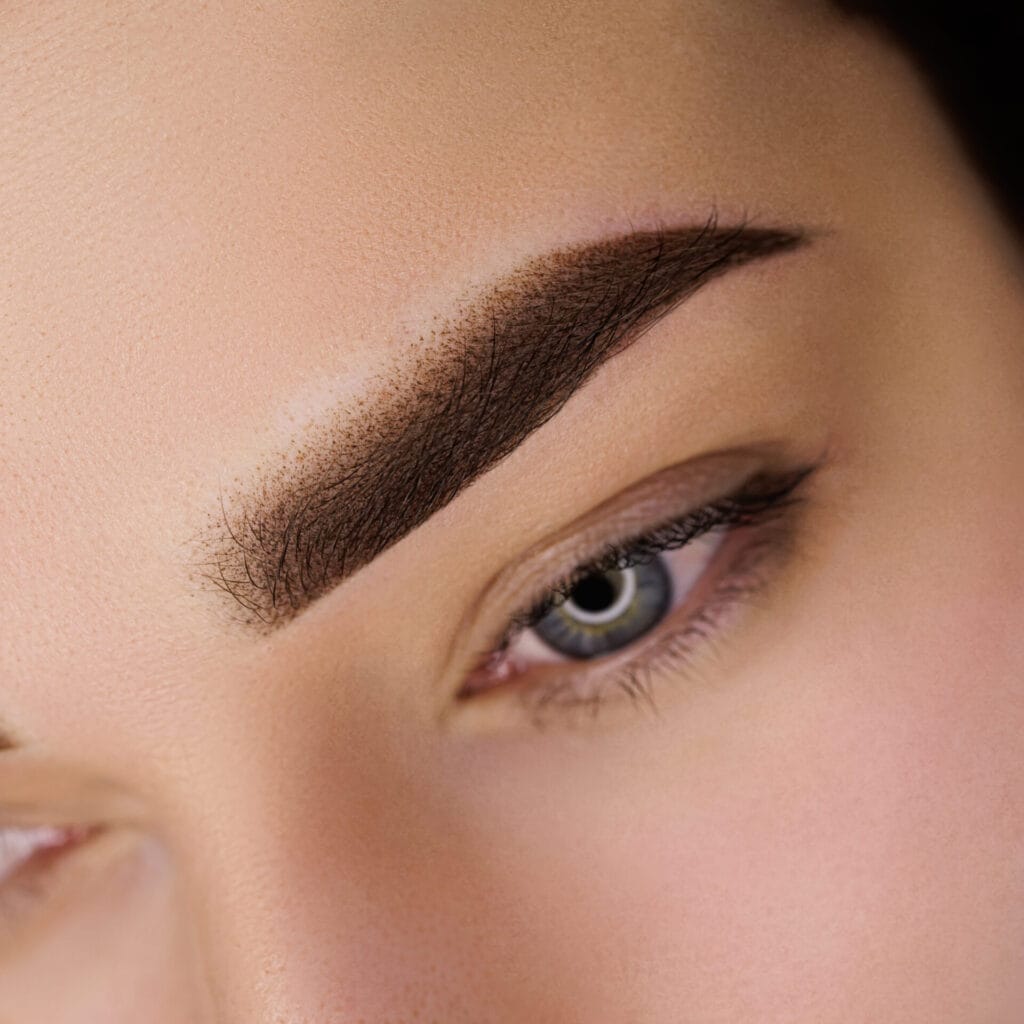
Microblading vs. other brow techniques: pros and cons
Microblading is just one of many techniques available for enhancing and shaping the eyebrows. It is important to consider the pros and cons of microblading in comparison to other brow techniques to determine which option is best suited to your needs.
One of the main advantages of microblading is its ability to create natural-looking results. The hair-like strokes mimic the natural growth pattern of eyebrows, resulting in a more realistic and defined appearance. Additionally, microblading offers long-lasting results, with the effects typically lasting up to two years.
However, microblading does have some limitations. It is not suitable for individuals with certain medical conditions or skin conditions, such as eczema or psoriasis. Additionally, the procedure can be more expensive than other brow techniques, as it requires specialized training and equipment.
Other brow techniques, such as eyebrow tinting or eyebrow pencils, offer a more temporary solution for enhancing the brows. These techniques can be more affordable and accessible for individuals who are not ready for a semi-permanent solution. However, they may require daily maintenance and touch-ups to maintain the desired look.
Microblading has gained popularity in recent years due to its ability to enhance and transform the appearance of eyebrows. This semi-permanent makeup technique offers long-lasting results and customization options that can suit a variety of preferences and features.
Finding the right microblading artist is crucial for achieving optimal results. Researching potential artists, asking questions during consultations, and considering their certification and experience are important steps in the process.
Proper preparation and aftercare are also essential for achieving optimal healing and results. Following pre-appointment instructions, bringing reference photos to your appointment, and following aftercare instructions closely can help ensure that you achieve the desired outcome.
Microblading can be customized for different skin types and hair colors, allowing for a personalized approach that suits each individual’s unique features. It is important to communicate your preferences and concerns with your chosen artist to ensure that they can tailor the procedure to your needs.
In conclusion, microblading offers a long-lasting and natural-looking solution for enhancing and shaping the eyebrows. With proper research, preparation, and aftercare, you can achieve the brows of your dreams.

